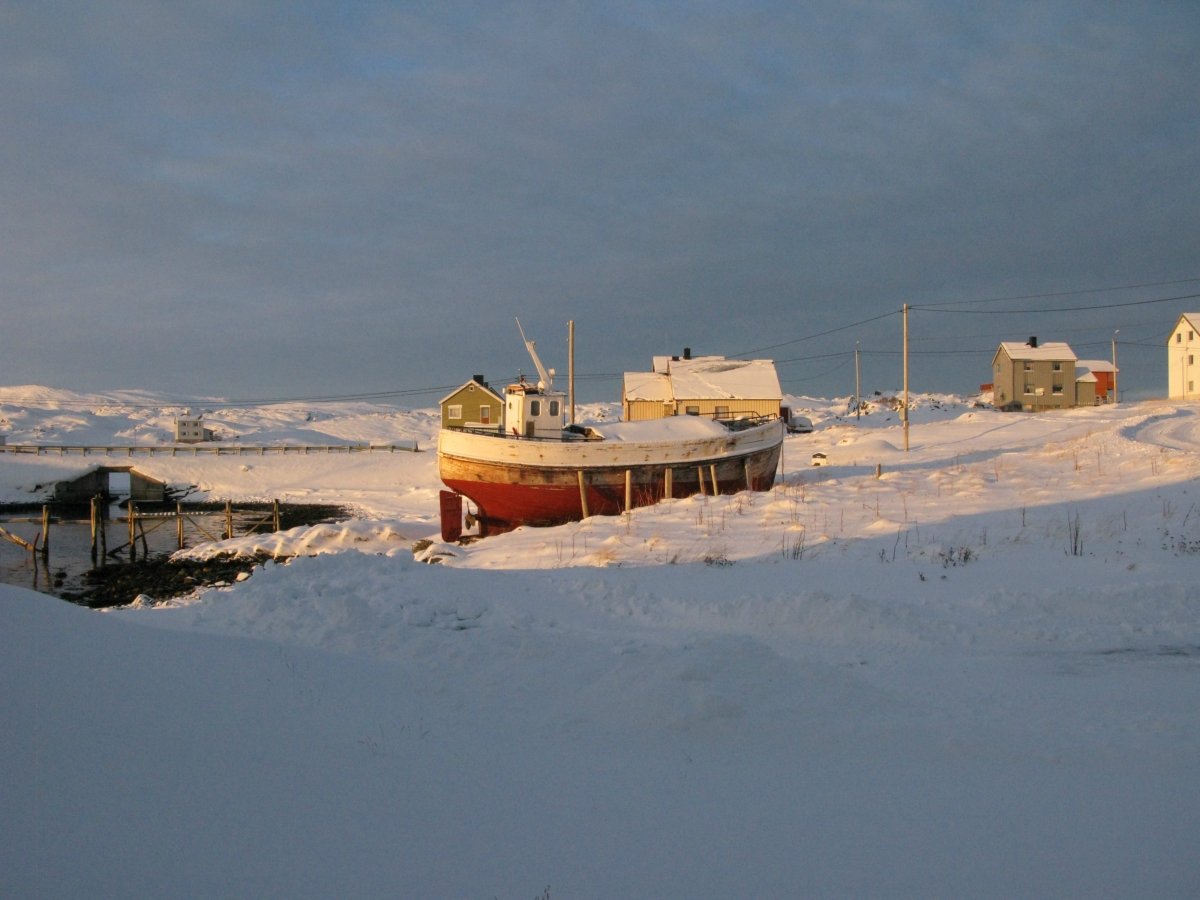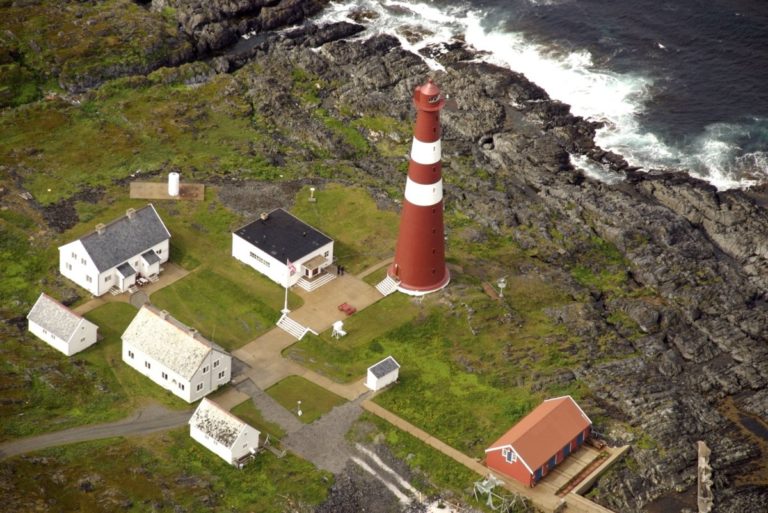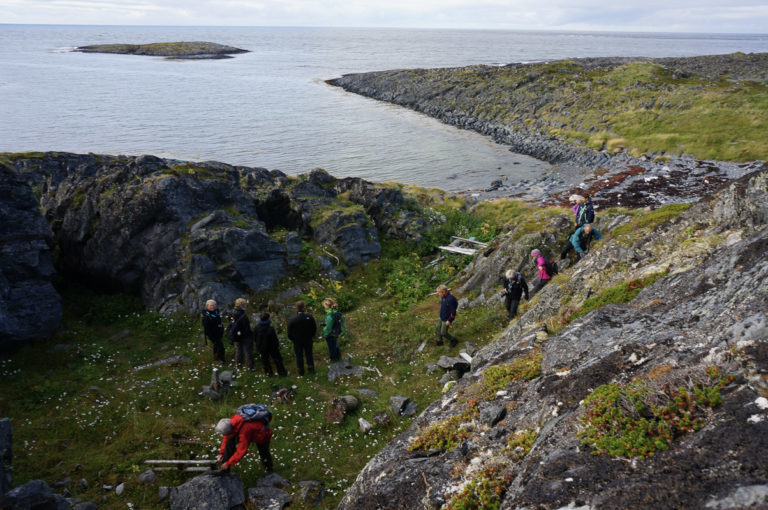On the coast of Finnmark, nearly everything you see has been built since the Second World War. If you want to delve into the area’s history, you will have to look a little harder and Gamvik Museum is a good place to start.
Gamvik is situated in the far northeast of the Nordkyn Peninsula, Europe’s most northerly mainland. Since the Middle Ages, Gamvik has been one of the most important fishing villages out towards the Arctic Ocean. However, since the Second World War, the village has lost ground to Mehamn and Kjøllefjord due to its relatively narrow harbour. Today, peace and quiet has returned to this fishing village of 180 inhabitants, but Gamvik Museum will tell you all about its rich history.
Practical information on Gamvik Museum
Gamvik is located on the north eastern side of the Nordkyn peninsula in Finnmark. The easiest option would be to fly to Mehamn with Wideroe from any of the main airports in Northern Norway (Tromsø, Alta, Lakselv etc). You can also arrive by the hurtigruten boat which stops in Mehamn where there is a hotel. From Mehamn you can rent a car and take the short journey eastwards to Gamvik. Gamvik is not a big place, and the museum is well signposted.
The museum is on the site of the old fish processing factory
Gamvik Museum is situated on the premises of the old fish processing factory, Brodtkorbbruket. Brodtkorb is the name of the village owner, who bought fish from the coastal people on Nordkyn, sold them everyday essentials and gave them credit when the fishing was poor. The modern factory dates from 1947, yet its method of construction is very similar to the traditional piers that were constructed before the destruction wreaked during the Second World War, leaving us to imagine the rich history of which no evidence now remains.
Follow the lost art of fish preparation
As Gamvik Museum is a production plant, you can follow the production process that was used as recently as the 1960s at the reception facility. At the plant, the fish were weighed, cleaned and rinsed, and their liver and eggs placed in barrels. The fish were then either hung up to dry or put on ice for export as fresh fish. “To bait the line” means to hang bait on 2–400 hooks on a long line, which was generally women’s work.
A rich coastal heritage existed along the Finnmark coastline
From the Late Middle Ages, more and more Norwegians moved to the Finnmark coast. They fished for cod in the spring, dried it and transported it to Bergen. In Europe, there was a high level of demand for high-protein dry fish, particularly during Lent. As the fishermen had small boats that they could haul up onto dry land, the population was spread across many small communities in the outlying areas of the coast. Gamvik Museum has displays of fishing equipment, as well as the simple cattle farming, home crafts and maritime Sami culture on the outer coast and further inland to the fjords. At the now abandoned village of Omgang, several witches were burned during the 1600s.
Whale hunting was common place in the 19th Century
As early as the 1500s, the Dutch hunted whales off the coast of Finnmark. However, whale hunting did not really take off as a major industry until the late 1800s when Svend Foyn introduced a more industrialised form of whale hunting. Towards the end of the 1890s, however, most whale stocks were so decimated that the catches fell sharply.
The Mehamn Rebellion destroyed the whale hunting industry in the north
After 1900, the important spring cod fishing season failed in Finnmark for several years in a row. The fishermen believed there was a link between whale hunting and the lack of fish. When there were no whales around, the capelin and cod were not chased towards the shore. On Whit Sunday 1903, the situation came to a head in Mehamn, and the whale hunting station there was razed to the ground and soldiers were summoned from Vardø to clear up. The rebellion had political consequences too: The whale became a protected species in Northern Norway and the first parliamentary representatives from the Norwegian Labour Party (Arbeiderpartiet) were voted in the following autumn. To learn more there is a good summary on this youtube mini documentary.
Remeber to check out the artefacts outside the museum as well as inside
The pier is part of a wider setting. Outside the museum is a large pollack drying rack. This rack also dates from after the war, but the production of dried fish is an ancient process along the coast of Finnmark. A Nordland motor boat is also on display outside. This boat was saved from the destruction that took place in 1944. Gamvik was formerly a port of call for the Hurtigruten, but it did not have a pier. The service boat “Gamvik” therefore sailed out to the open sea to meet the Hurtigruten and loaded and unloaded passengers and cargo there. In 1990, the Hurtigruten stopped calling here and the service boat is now on dry land.

Visit Nordkyn
For all the information you need on visiting Gamvik Museum and the surrounding peninsula, simply check out the Visit Nordkyn webpage.






